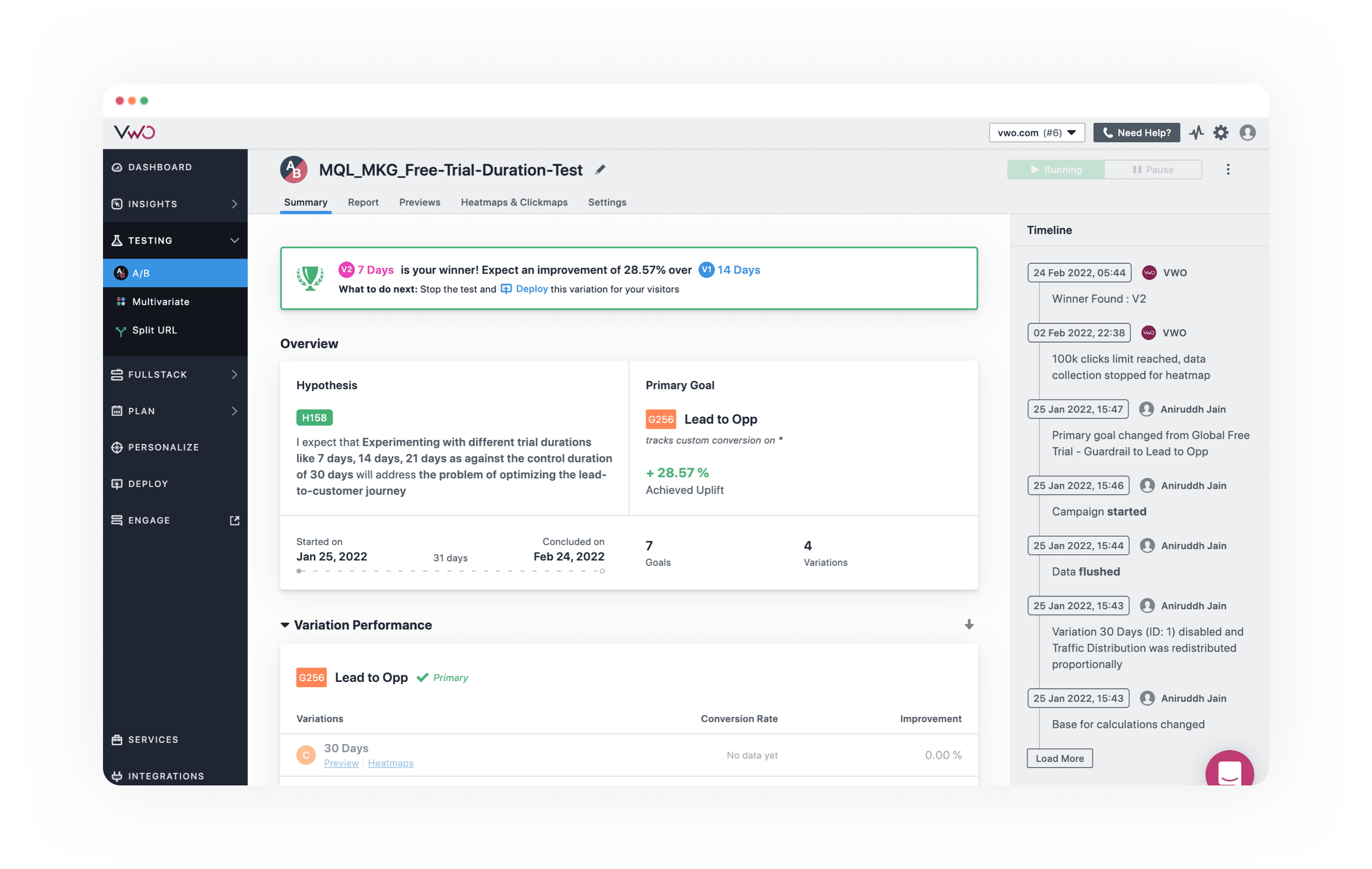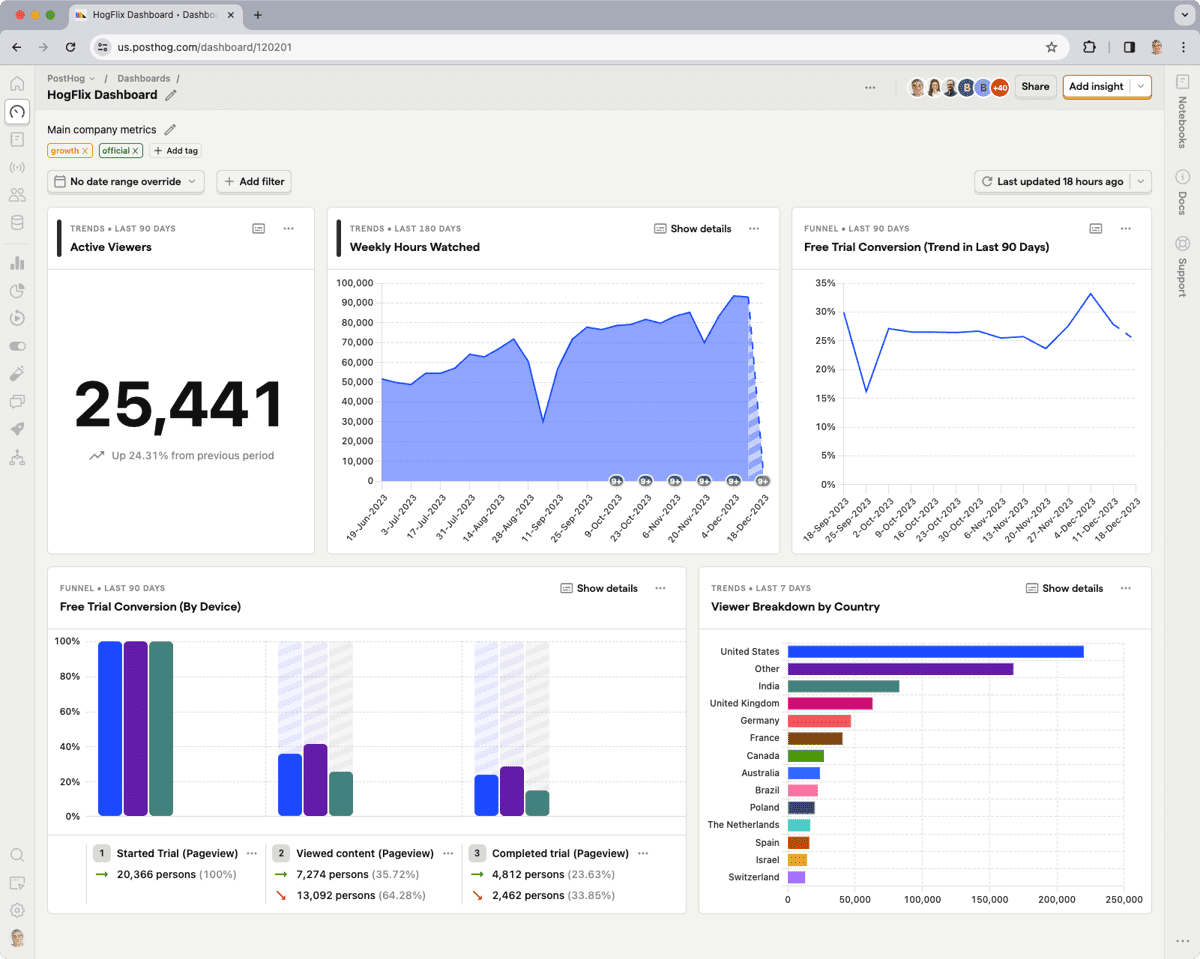Are you looking to optimize your website's performance but unsure if VWO is the right choice? You're in luck! We've compiled...

Close-Ended Questions: Benefits, Use Cases, And Examples
Close-ended questions are the "essence" of each survey and poll, as they can bring the numbers and help you gain more data-based insights and eliminate all the guesswork.
In this article, we'll see what close-ended questions are, go through the main types and use cases, and finish up with some valuable examples that can help you make your customers loyal advocates of the brand.
What are Close-Ended Questions?
Close-ended questions are a type of inquiry that limits respondents to a set of predefined answers, allowing for straightforward, concise responses. These questions are often formatted as yes/no, multiple-choice, or rating scale queries.
They are particularly useful in surveys, polls, and research contexts where statistical analysis is required, as they allow researchers to gather quantitative data that is easy to measure and compare. Their structure shines when clarity is key because they leave little room for misinterpretation, as a straightforward question gets a straightforward answer.
Digging deeper into their design reveals why these questions work well in surveys and polls. Like multiple-choice tests back in school, they offer limited responses—A, B, C, or D—and who doesn't remember filling out those Scantron sheets?
In practice, this means asking something like "Do you use social media daily?" The possible answers could be 'Yes' or 'No'. This binary setup makes tallying results faster. And can lift the survey response rate, too!
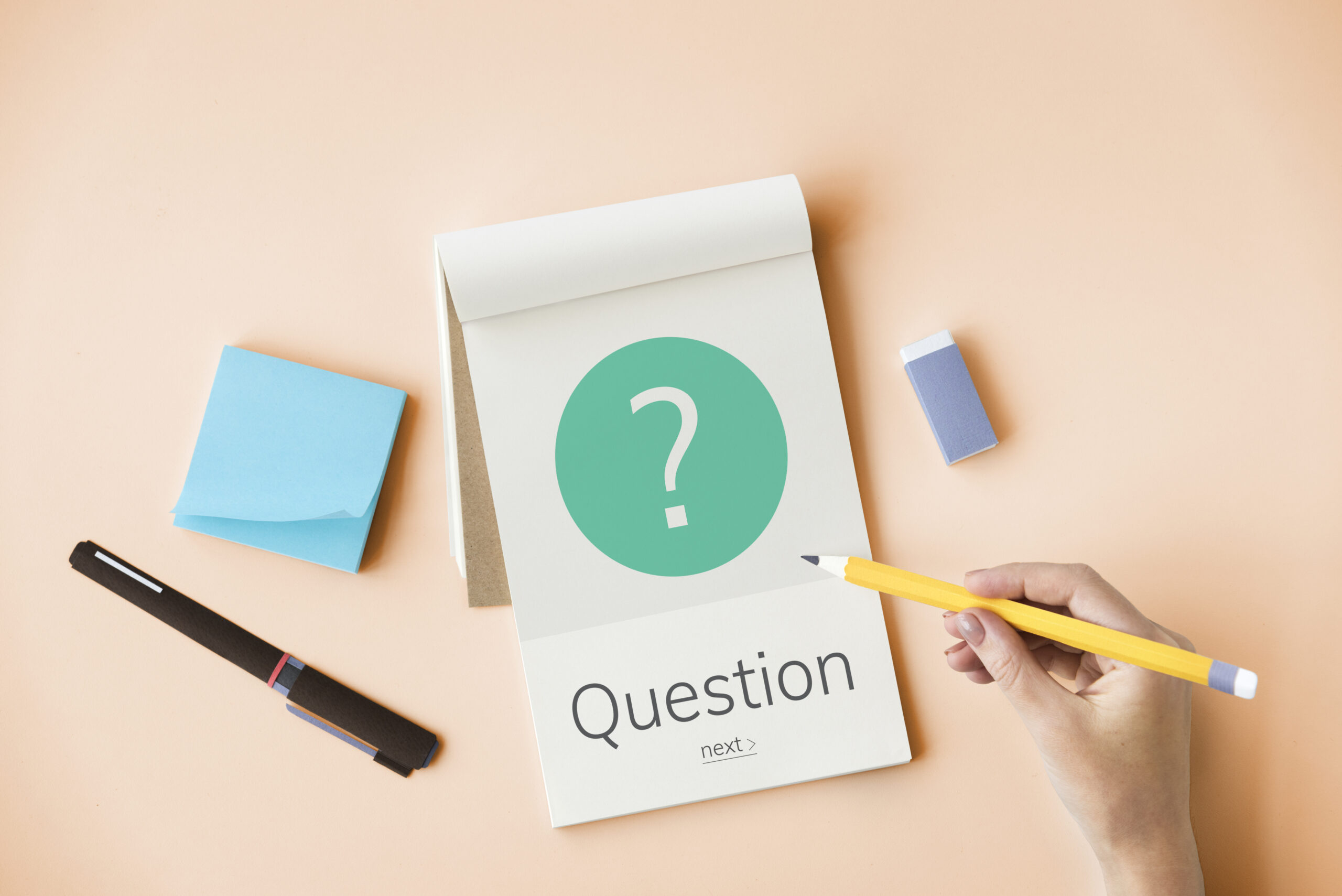
Close-Ended Question Types
Closed-ended questions are an essential tool in research, surveys, and various forms of assessments. They provide a limited set of options for respondents, ensuring ease of answering and simplicity in data analysis. There are several types of closed-ended questions, each serving different purposes:
- Yes/No Questions: The simplest form of closed-ended questions, they require respondents to choose between 'Yes' or 'No'. These questions are useful for gathering straightforward, binary responses.
- Multiple Choice Questions (MCQs): These questions offer respondents a list of predefined choices and ask them to select one or more that apply. MCQs are versatile and can be used to gather information on preferences, opinions, and behaviors.
- Rating Scale Questions: Often used to measure attitudes or the intensity of feelings, these questions ask respondents to rate their responses on a scale. The scale could be numerical (e.g., 1 to 5) or descriptive (e.g., from 'Strongly Agree' to 'Strongly Disagree').
- Likert Scale Questions: A specific type of rating scale, Likert scales measure how strongly respondents agree or disagree with a statement. This format is widely used in surveys to gauge public opinion or attitudes.
- Rank Order Questions: These questions ask respondents to rank a set of items in order of preference or importance. This type is useful when the goal is to understand preferences or priorities among multiple options.
- Dichotomous Close-Ended Questions: Similar to yes/no questions, dichotomous questions offer two opposing options like 'True/False' or 'Agree/Disagree'. They are straightforward and easy to analyze.
- Semantic Differential Scale: This type uses a scale with two opposite adjectives at each end (e.g., 'Happy-Sad'). Respondents choose where their opinion falls on this continuum.
Pros and Cons of Close-Ended Questions
Closed-ended questions are widely used in various data-gathering activities for their specific benefits and drawbacks.
Pros
- Higher Response Rate: Closed-ended questions tend to yield higher response rates as they are quick and easy for respondents to answer, especially in large-scale surveys.
- Ease of Data Analysis: The uniformity of answers makes it easy to collect quantitive data, analyze it properly, and generate statistics and graphs.
- Simplification of Data Collection: These questions streamline the data collection process, making it possible to automate responses, which is particularly beneficial in quantitative research.
- Efficient Answer Options: They provide predefined options that can reduce the ambiguity in responses and minimize the effort required to interpret answers.
Cons
- Limited Insight: Respondents are restricted to the provided options, which can limit the depth of understanding and insight into their true opinions or experiences.
- Potential for Misinterpretation: The fixed nature of answer choices may not fully capture the nuance of respondents' feelings or thoughts, leading to possible misinterpretation of the data.
- Bias in Question Formation: The way questions and answer options are framed can introduce bias, influencing the responses and skewing the results.
When to Use Close-Ended Questions?
Polls and surveys are like the bread and butter of close-ended questions; they get straight to the point. But that's not all these little gems are good for.
1. In Product Reviews
Imagine you've just launched a new sneaker line, and you want quick customer feedback. Closed-ended questions work wonders here because they give customers an easy way to express their satisfaction without needing a novel on "The Comforts of Modern Footwear." A simple 'Yes' or 'No' does the trick, which lets you collect quantitative data, and review it (and take measures, of course!)
But why stop at yes or no? Ratings on a scale from 1 to 5 can turn vague feelings into actionable data faster than you can say "market research." And when it comes time for analysis, quantitative responses have your back more reliably than caffeine during finals week.
2. During Live Polling Events
You're in the middle of a webinar. Your audience is scattered across different time zones but united by one thing: curiosity about what others think. Here come close-ended survey questions swooping in. They let participants cast their votes swiftly without interrupting their snack break, which would be a win-win situation if there ever was one.
This real-time engagement isn't just cool, it's also insightful. With immediate results popping up on screens everywhere, trends emerge before attendees even sign off. That means instant gratification with insights included—like getting your pie (chart) and eating it too.
3. To Improve Customer Service Interactions
In customer service interactions, using multiple choice close-ended questions can significantly streamline the process. By replacing blank fields with structured options, customers can swiftly pinpoint their issues, allowing service representatives to identify and resolve queries more efficiently.
You can reduce ambiguity and direct the conversations to a quicker path to satisfactory resolutions. It's particularly effective in automated customer service systems where users can select from a menu of common problems, expediting the help process.
How to Create Effective Close-Ended Questions?

Creating closed-ended questions is just as important as your customers' input. You want questions to come out consistent and satisfying every time. Let's see how you can make your questions hit the sweet spot.
- Keep it simple - use clear, concise language
- Avoid leading or biased wording that might sway answers
- Offer balanced choices if using multiple-choice format
- Make sure options are mutually exclusive to avoid confusion
- Pilot test your survey questions to iron out any wrinkles before going live
5 Closed-Ended Questions Examples
Pose a simple question, and you might just unlock the treasure trove of data you've been after. That's the magic of close-ended questions, they're like keys that open up chests full of insightful nuggets (minus the pirate ship). So here are five shiny examples to stash in your survey toolkit.
1. Are You Satisfied with Our Service?
This straightforward yes-or-no question is a quick way for businesses to gauge customer satisfaction. A majority of positive responses indicate customer contentment, while negative feedback signals the need for immediate improvement.
Suppose it's mostly thumbs-up, great. If not, it’s time to fix what's broken, and quickly.
2. How Likely Are You to Recommend Us to a Friend or a Colleague?
This one’s got clout because it goes beyond mere satisfaction. It taps into loyalty and brand advocacy. It often pops up as part of Net Promoter Score surveys, where each response slots customers into promoters, passives, or detractors categories. It's super handy for measuring growth potential.
Spoiler alert: High scores mean you’re probably doing something right.
3. Did You Find What You Were Looking For On Our Website?
As a digital version of "Can I help find something?", this question is crucial for finding out usability issues lurking on websites.
When users hit 'No', it's clear there's homework to do, like refining navigation menus or improving search functions, to stop visitors from bouncing away from your website (which may crush your business.)
4. Which Feature Do You Value Most In Our Product?
Talk about getting straight to the point, this query puts product features under the microscope and asks users directly which one steals their heart (metaphorically speaking). The answers line up neatly like ducks in a row for easy analysis and can be pivotal when deciding where to funnel those development dollars next quarter.
Bonus points if all fingers point towards your latest release. That means kudos all around.
5. In The Last 12 Months, How Often Have You Used Our Product/Service?
This frequency check isn’t about patting on the back. It gets down to how integral your offering has become in people’s lives. Whether they're super fans or casual acquaintances with your product/service, it becomes crystal clear once responses roll in.
So remember these questions as nifty tools at your disposal, each crafted carefully so you can dive deep into discussions, spark meaningful conversations, and unlock new insights. They're here to help guide you through any professional scenario with ease.

Close-Ended vs. Open-Ended Questions - Which Ones Are Better For Me?
Understanding the differences between close-ended and open-ended questions is fundamental in designing effective surveys, interviews, and research studies. Each type serves distinct purposes and provides varied depths of insight.
1. Nature of Responses
Close-ended questions provide quantifiable data during your online survey, with responses limited to predefined options such as 'yes' or 'no', multiple-choice, or scales. Such structure makes it straightforward to answer and analyze statistically.
In contrast, open-ended questions invite respondents to answer freely (in their own words) offering richer, qualitative feedback that can uncover motivations, feelings, and detailed opinions.
2. Analysis and Interpretations
The responses from close-ended questions are easier to tabulate and translate into charts or graphs, facilitating a more objective analysis.
Open-ended responses, however, require more nuanced interpretation and coding to identify themes and patterns, providing subjective but detailed insights.
3. Context and Depth
Closed-ended questions are efficient for obtaining specific information and are ideal when the research question is clear-cut. However, they can miss the context and depth that open-ended questions can elicit.
Open-ended questions are invaluable when exploring new areas where the range of possible responses is not known beforehand, allowing for a more exploratory approach.
How Can FullSession's Tools Help You Gather Customer Feedback?
FullSession offers a range of feedback tools that can help you gather feedback and make your customers happy. You can use feedback forms and feedback buttons, all of which you can find on the FullSession's dashboard, which you can also customize.
Why is this so important? Feedback tools let you get direct thoughts from your customers. Then, you can understand what they like and dislike, what they would change, and what works for them perfectly.
Steps to Collecting User Feedback with FullSession
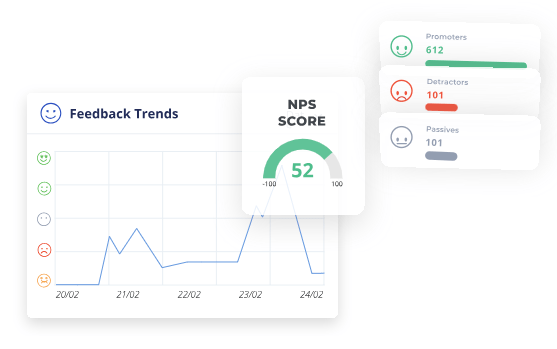
Here's a step-by-step guide on how to gather customer feedback with FullSession's tools:
- Locate the ‘New Feedback’ widget at the top-right corner of the page.
- Add a name and description to the form for easy identification later.
- Adjust language, reactions, colors, and position. Preview the form before publishing, and use the reset button if needed.
- Set up the feedback form's flow, choosing questions about the user's feelings or requesting contact details.
- Target the form's audience based on the devices they use using the FullSession tracking code. Choose whether to collect feedback from all pages or a specific one.
- Choose the feedback delivery method, such as your email inbox, but keep in mind the daily response limit.
- Review all configured steps before activating the feedback form. Once you're satisfied, activate the form to start receiving customer feedback.
Install Your First Website Feedback Form Right Now
It takes less than 5 minutes to set up your first website or app feedback form, with FullSession, and it's completely free!
FullSession Pricing Plans
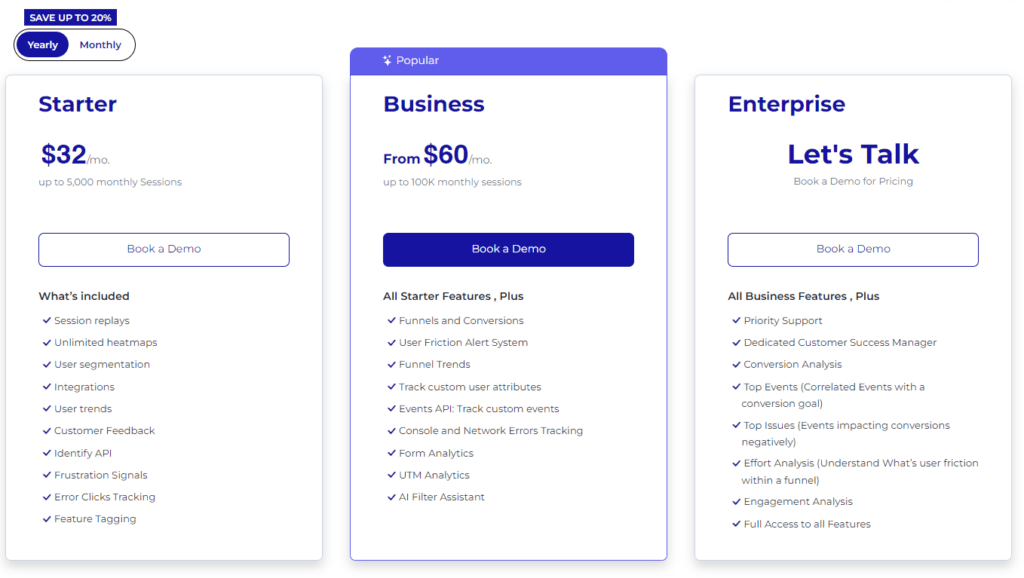
Here are more details on each plan.
- The Starter plan costs $39/month or $32/year and allows you to monitor up to 5,000 monthly sessions with up to 6 months of data storage.
- The Business plan costs $75/month or $60/year and helps you to track and analyze up to 100,000 monthly sessions with up to 12 months of data storage.
- The Enterprise plan has custom pricing and offers customizable sessions plus full access to all features.
Conclusion
Close-ended questions can add a lot of value to your business. They are unbiased and can give you a clear picture of what you're about to expect from customers.
Nail them down right, clear, unbiased, and they'll serve up the goods without fail. Just know when to pair them with their open-ended questions, so you get the whole story, rather than a part of it.
FullSession can give you all the feedback tools to improve customer satisfaction, bringing more clients to your company. Book a demo now.
FAQs in Relation to Close-Ended Questions
What is an example of a close-ended question?
"Did you enjoy the meal?" qualifies as a classic close-ended question, which aims for a simple Yes/No answer.
What is the meaning of close-ended?
Close-ended refers to questions designed for quick, often one-word answers – like just yes or no, true or false.
Why use close-ended questions?
Close-ended questions require quick answers, so they are a good option in case you need to get as many survey participants as possible. You can also use them if you need valuable data for a presentation where you can show numbers.
What are open-ended and closed-ended questions?
Closed-ended and open-ended questions are both used in many satisfaction surveys. Their goal is to provide a detailed look at quantitative and qualitative data, draw conclusions, and act accordingly.
